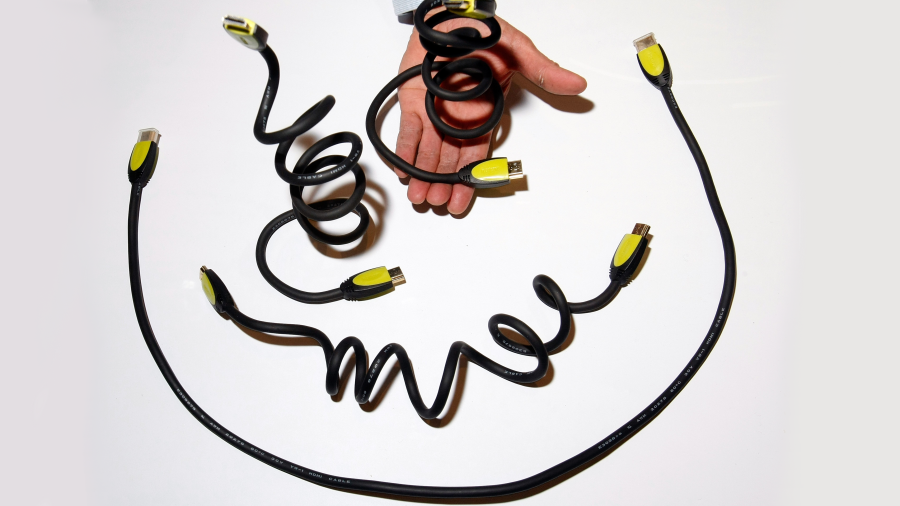What will your next phone charger look like? That’s up for negotiation.

If you’ve ever switched computers brands even cellphones, chances are you needed a new charger.
That’s because certain plug shapes haven’t been standardized from company to company or country to country. But sometimes companies agree to a common strategy, like USB ports, for example.
In fact, companies can set the standard for new technology just by being first or by being the most dominant.
While American firms have been the main standard-setters in the past, Chinese businesses are picking up speed.
I spoke with Marketplace China correspondent Jennifer Pak about this. And she says without international standards, switching between brands or locations can be a headache. The following is an edited transcript of our conversation.
Jennifer Pak: That’s why consumers reap a lot of benefits every day, if these different companies agree on international standards, because that means that your laptop cannot only connect to the Wi-Fi in the United States, but when you travel to Japan, it could also log on to the Wi-Fi there. Or what about your HDMI cable? You can plug it into any TV regardless of the brand. And so it’s up to businesses then to decide should they join, or will they be left out?

Kimberly Adams: And is there, like, a central group or organizing body that decides these are the standards we’re going to use?
Pak: Generally, like in the U.S., it comes from the industry level, it comes from companies themselves and also business groups. In China, it’s a little bit more top-down. The government itself has come out with some standards for the companies and hoping that these standards will then be adopted abroad.
Adams: This issue, international standard setting in tech, might be a bit obscure for a lot of people. Why does it matter? Who sets these kinds of standards for the future of tech, if the goal is indeed consistency?
Pak: We’re talking about billions of dollars in revenue. Whoever controls the standardization controls the technologies, and if you control the technologies, you can dominate the market. So if you look at 5G right now, Huawei is being very aggressive in patenting its technology. And Apple and Samsung, for example, they rely on Huawei 5G technology, and so they have to pay the licensing fees.
Adams: There is this consensus here in Washington that Chinese telecom giants like Huawei and ZTE pose national security risks. With all of these restrictions on U.S. firms from working with these companies, how is that affecting international standard-setting?
Pak: Well, right now, it’s not really clear just how much U.S. companies can engage with the likes of Huawei. So say, for example, when there are meetings where Huawei representatives are there for standard-setting, sometimes American firms might not attend, or they might restrict their participation. And that’s a real problem, because that could mean standards are being set without the input of American firms.
Adams: China has a big consumer market. Could its tech companies just say, “Look, with all these trade tensions, we’re just going to go ahead and go on our own, create our own standards. And the US can go kick rocks?”
Pak: When you speak to people in the industry, they talk about it as less of imposing on each other and more about companies coming together to agree. Because at the end of the day, it’s not binding — a company doesn’t have to adopt the standards if it doesn’t want to. But part of China’s goal, the government’s goal, is not just for its companies to dominate and be good in this market. It wants to go abroad and conquer. For that to happen, you need a level of acceptance of your standards in other markets because again, standards mean market access.
Related Links: More insight from Kimberly Adams
The Council on Foreign Relations has a blog post from 2020 digging into just how seriously U.S. policymakers should take Chinese efforts to lead international standard-setting. They suggest more U.S. investment in the tech sector is the best counter to growing Chinese influence.
Jennifer talked about the money to be made by controlling the patents behind new tech standards. And Bloomberg has a couple of stories about how some of those patent fights have been going, including an explanation of the acronym FRAND, which stands for fair, reasonable and nondiscriminatory. It’s expected that companies that own the patents to tech that becomes standard will license those patents to other business on “fair, reasonable, and nondiscriminatory terms.” Of course, there isn’t a standard of what those terms should be.
The future of this podcast starts with you.
Every day, the “Marketplace Tech” team demystifies the digital economy with stories that explore more than just Big Tech. We’re committed to covering topics that matter to you and the world around us, diving deep into how technology intersects with climate change, inequity, and disinformation.
As part of a nonprofit newsroom, we’re counting on listeners like you to keep this public service paywall-free and available to all.
Support “Marketplace Tech” in any amount today and become a partner in our mission.


















